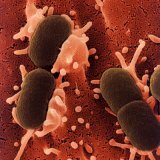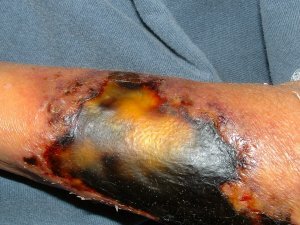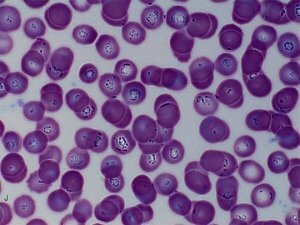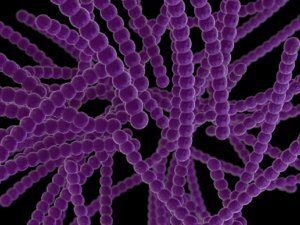Intestinal infection: symptoms and treatment

Intestinal infection - a disease that is among the five most common, and takes the "honorable" second place after such a disease as ARVI and ARD.A large number of people suffer from it each year.
This disease is dangerous because it affects primarily the intestine of a person who, as is known, occupies an important place in maintaining normal immunity of the whole organism. As for pathogens, there are a lot of pathogens, both in the form of bacteria and viruses. There are more than thirty types of intestinal infections and each is dangerous in its own way.
This disease is especially dangerous for children, as it is accompanied by diarrhea, which in turn leads to dehydration of the body.
most common intestinal infections are staph bacteria, salmonella, shigella, cholera and viruses such as rotavirus and enerovirus. These pathogens getting into the intestine begin to produce enterotoxin, or simply put, poison, which causes gastrointestinal poisoning. They are transmitted mainly through water, food, household items.
Symptomatic of intestinal infections .
symptoms of intestinal infection in accordance with the clinical syndrome divided into three:
- Intoxication syndrome, which occurs due to destruction of microbial gastrointestinal cells by means of endotoxin Incoming. This stage is characterized by the emergence of general weakness, decreased appetite, subfebrile temperature. When intoxication acquires a moderately expressed form, there is already pronounced weakness, anorexia, nausea, febrile temperature. Upon the occurrence of severe intoxication can be observed weakness, vomiting, headache, partial impairment of consciousness, raising the temperature to 40º C.
- Gastrointenstinalny syndrome is characterized by the emergence of symptoms of acute gastritis, in particular a sharp pain in the epigastric pain, vomiting, presence of pain on palpation of the epigastric region. Further, there are signs and symptoms of acute enteritis, accompanied by cramping pains, increased peristalsis and rumbling, diarrhea. The next stage is characterized by symptoms of acute colitis syndrome, namely cutting pain and cramping in nature in the abdomen, the presence of false urgency, tenesmus( pain in the rectum), frequent diarrhea.
- Dehydration syndrome, more simply, dehydration is the most dangerous stage of the disease, both for adults and children. In turn, it is divided into four stages:
- the initial degree is characterized by the presence of thirst and loss of fluid to three percent of the fluid from body weight;
- vascular insufficiency is characterized by loss of body weight from four to six percent, the appearance of pronounced muscular weakness and dryness of mucous surfaces;
- multiorgan failure - it determines already from seven to nine percent of the loss of fluid from body weight. There is shortness of breath, tachycardia, an obvious reduction in blood pressure to critical values of 50-60 mm. Gt;P.
- terminal degree is characterized by loss of fluid in the amount of 9 percent of body weight, eye blindness, dryness, hypothermia, the pulse is difficult to determine.
Methods of treatment of intestinal infections .
Treatment of intestinal infection consists of several stages. First of all, it is detoxification, the purpose of which is to activate the elimination of toxins naturally, namely through the kidneys. It is necessary to provide the patient with a copious drink. At the initial stage, the liquid should be in the form of a saline solution. In severe cases, infusion therapy is used, which improves blood microcirculation and blood circulation intensity in general. In general, a glucose solution of five to ten percent and saline solutions are used.
The next step is the use of antibacterial drugs as everyone known as biseptol, furazolidone, cefesoline, and new generation drugs such as ceftriaxone, norfloxacin, ofloxacin. The duration of application of these drugs is determined by the doctor and is no less than five days.
Regarding the use of symptomatic therapy, it is primarily antipyretic drugs. It can be aspirin for 0.5-1.0 ml. At one time orally. Can be intramuscularly administered analgin 50 percent in the amount of one or two ml. If there is "white hyperthermia" intramuscularly inject 1ml. Dimedrola one percent + 2ml. Papaverine hydrochloride two percent.
Further, analgesic therapy is used to eliminate pain caused by spasm musculature of the gastrointestinal tract. Applicable no-shpa, bicarbon, bellalgin or bellestezin.
Antiemetic therapy is of particular importance. Also it is spent for elimination of vomiting as the reason of an inflammation of a mucous stomach and its intoxication. To stop this process, detoxification therapy or gastric lavage is performed in the presence of acetone-amniotic vomiting. When symptoms of acute gastritis occur, parenteral antispasmodics such as papaverine and an anti-emetic drug metoclopramide are prescribed.
The conclusion is antidiarrheal therapy, the purpose of which is complete elimination of diarrhea and a decrease in the amount of daily defecation, in order to avoid the development of dehydration in the body.
In this article, we described in detail what the intestinal infection is: symptoms and treatment. Do not forget that if you have the first symptoms of this disease, you need to seek professional advice from doctors, in order to avoid dangerous consequences for the body as a whole, and for the life of the patient. Do not try to heal yourself on your own, especially regarding the incidence of children, since improper treatment can lead to irreparable consequences.



